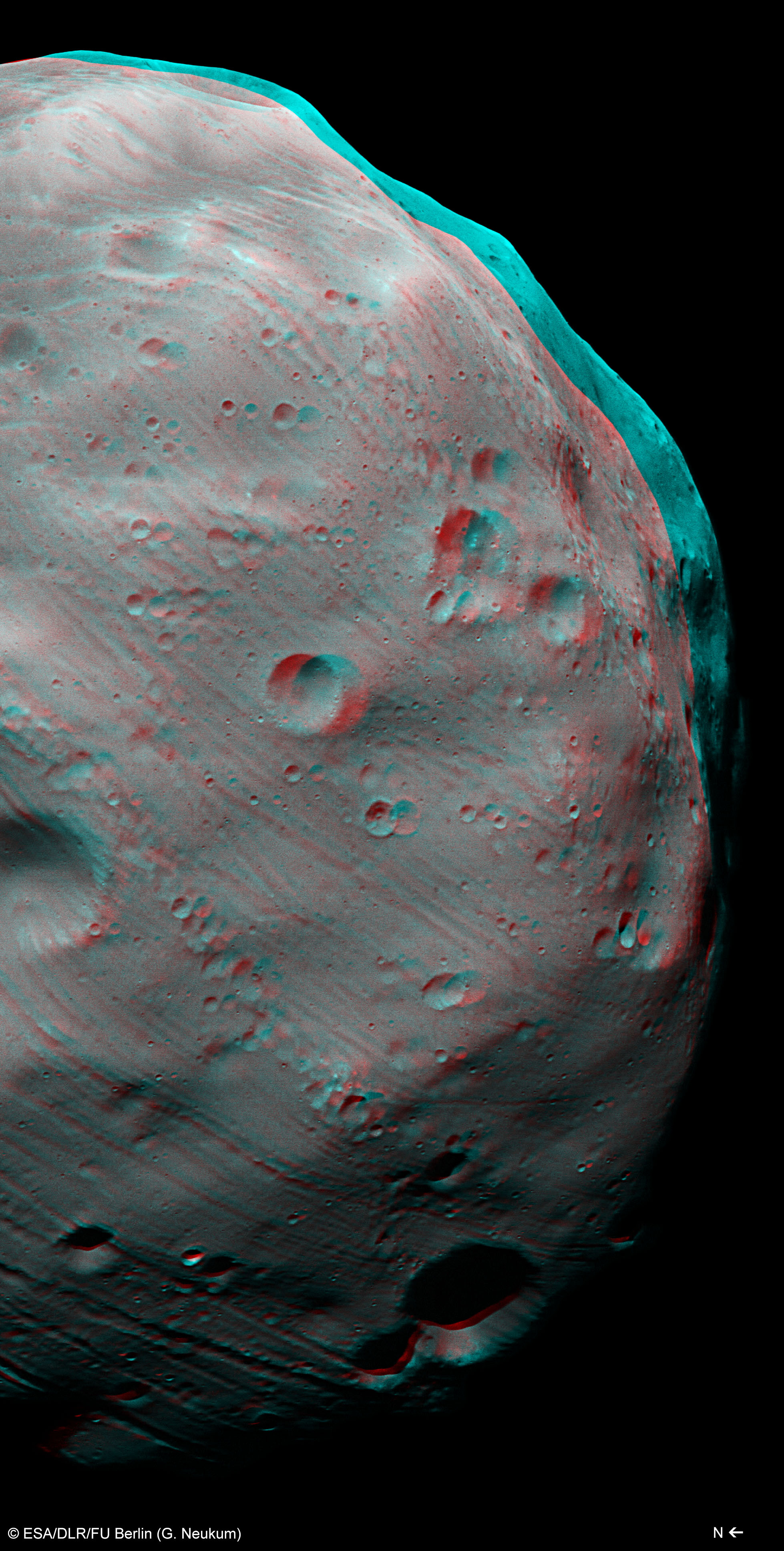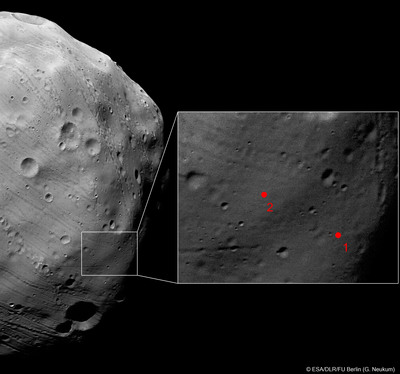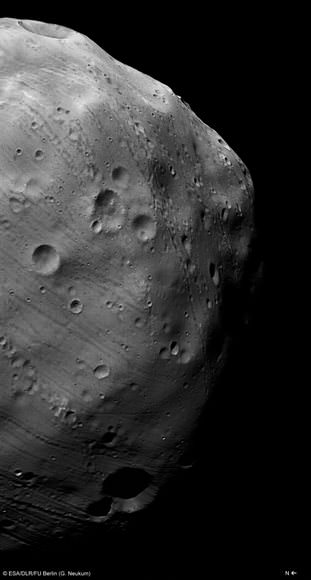[/caption]
ESA released new images of Mars’ moon Phobos, taken during the Mars Express March 7, 2010 flyby, showing the rocky moon in exquisite detail and also in 3-D. Mars Express orbits the Red Planet in a highly elliptical, polar orbit that brings it close to Phobos every five months, and it is the only spacecraft currently in orbit around Mars whose orbit reaches far enough from the planet to provide a close-up view of Phobos. Like our Moon, Phobos always shows the same side to the planet, so only by flying outside the orbit is it possible to observe the moon’s far side. Mars Express did such flybys on March 7, 10 and 13. Get out your 3-D glasses for a great look at Phobos, below.

Phobos is an irregular body measuring some 27 × 22 × 19 km. Its origin is debated. It appears to share many surface characteristics with the class of ‘carbonaceous C-type’ asteroids, which suggests it might have been captured by Mars. However, it is difficult to explain either the capture mechanism or the subsequent evolution of the orbit into the equatorial plane of Mars. An alternative hypothesis is that it formed around Mars, and is therefore a remnant from the planetary formation period.

In 2011 Russia will send a mission called Phobos–Grunt (meaning Phobos Soil) to land on Phobos, and an experiment will collect a soil sample and return it to Earth for analysis.
Phobos-Grunt will also carry with it The Planetary Society’s LIFE experiment which will test the survivability of microorganisms in the conditions of deep space. The experiment is a study of the panspermia hypothesis, which posits that microorganisms have traveled between planets sheltered deep inside space rocks.
For operational and landing safety reasons, the proposed landing sites were selected on the far side of Phobos within the area 5°S-5°N, 230-235°E. But new HRSC images showing the vicinity of the landing with better illumination from the Sun that previous images, which will provide valuable views and information for mission planners.
Mars Express will continue to encounter Phobos until the end of March, when the moon will pass out of range. During the remaining flybys, the high-resolution camera and other instruments will continue to collect data.
Source: ESA


Am wondering about the apparent lamination.. which don’t seem to flow in an evenly layered pattern? Are the non-linear layered feature’s meanderings a function or artifact of elevation around a spherical object? Or caused by simple camera angles?
My ignorant guess on the laminations is that they are evidence of shearing forces on the moon from tidal interactions with Mars … due to it being inside it’s Roche limit in an orbit which will eventually destroy it.
Note how you can tell the relative ages of the craters and laminations. The lams cut the old craters but not the young craters.
I’d really like to see a 360 degree view around the entire surface.. to continue following the ‘lamination(s). Are there top and bottom surfaces without those features?
I would venture to guess that what appears to be layering are actually made by many small meteorites grazing the surface. If you look closely they come in at slightly different angles and are not present in the deep craters. It appears like an apple hit by rock salt from a shotgun.